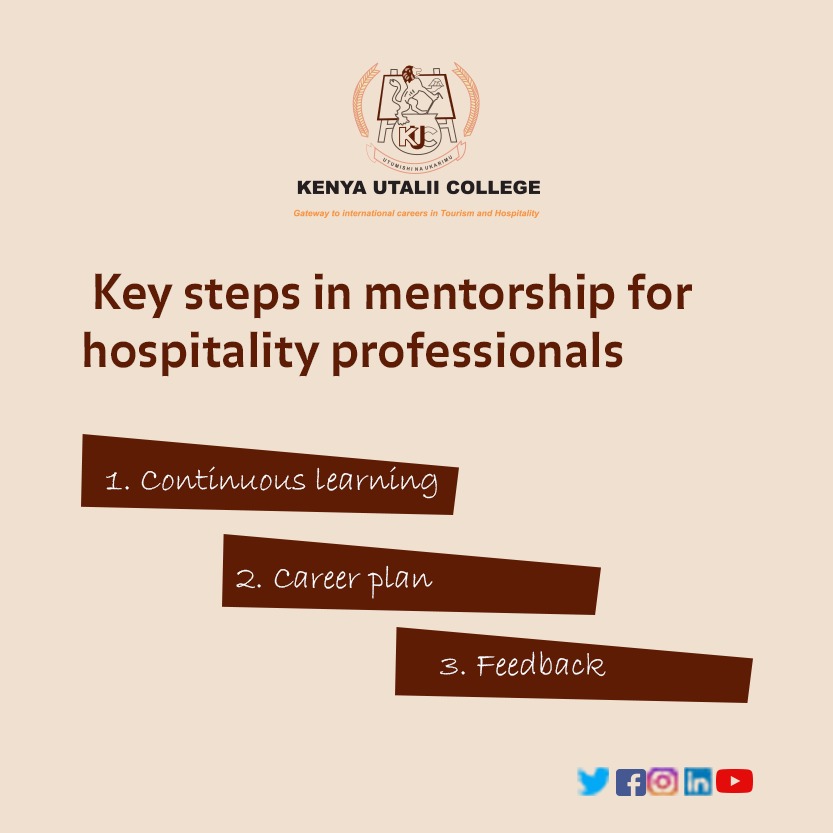Kenya Utalii College academic trip to the Coast was exciting and thrilling, as students explored various tourist sites, and got to learn about their history by Tim Tim Gikonyo, a Tour Guiding and Administration student at Kenya Utalii College. Tim Tim has a passion for wildlife and conservation and has coupled his passion with storytelling and photography.
Training at Kenya Utalii college ensures that students are well-equipped and become all-around professionals on completion of their studies. Towards this achievement, departments organize educational trips to hotels, lodges and many attraction sites within the tourism circuits in the country. During such educational trips, students get to have a perspective of the historical, cultural and touristic significance of the region they are touring. Besides, trips are a welcome break from the routine for both students and teachers, and students get to bond and also connect the classroom theory work with real-life and authentic experience in a more practical and meaningful way. Trips, therefore, inspire and stimulate students to understand the world that exists beyond the school curriculums.
Just recently, the Tour Guiding and Administration Course final year students had their educational trip to the coastal region. Here is an experience by our very own millennial guide- Tim Tim.
Day One:
Our day began with excitement and anticipation for relaxation, just at the mention of Mombasa; for as they say, “Mombasa Raha”. As Tour Guiding students, it would be a wholesome adventure, being taken through what we would be charged with as our official duties after graduation. We were all set with all kinds of photography gadgets, to take memorable captions of the entire trip. The day started with a morning brief from one of us and a guide alerting us of the towns we would be passing through. Our journey to Mombasa would include a stop at Emali town and short health breaks in smaller towns along the way.
The scenic landscapes on the way were just breathtaking; the rock formations would make you think that you were in a “canyon of sorts”, and of course, with a lot to learn on the various landforms and vegetation cover. Around Tsavo we spotted wildlife from afar, including the outstanding “lilac-breasted roller” which is an iconic bird and the national symbol for ornithology, that is, the study of birds. The giraffe height palms were an indication that our long journey was almost coming to an end. There was a calm soothing wave-sound as we crossed the Makupa causeway and the scenic sunset rays were something to die for. Finally, we were at our home, away from home; for the four days that would follow.

Day 2:
It would be ironic if one visited the coast and failed to swim at the beach or at least take a photo by the beach. We, therefore, had an early morning swim when the tide was low.
Our adventure-packed itinerary for the day started with a visit to the “Haller Park“, which is known for its environmentally friendly transformation from a mining site, to a major coastal conservation area. Our awesome guide Elizabeth took us around the park as she explained in detail, the various vegetation and different species, around the area. What captured our attention was the rare success story of land reclamation by the Bamburi Cement Factory, under the leadership of Dr. Rene Haller; something we uphold and advocate for, as upcoming tourism professionals. Our tour of the Park ended at the epic giraffe feeding point. We thereafter went for an inspection tour of the attractive Pride Inn Flamingo.
Later in the afternoon, we proceeded to Fort Jesus, a memorable structure with a rich history dating back to the 15th Century. Our tour of the facility was a thrilling one, courtesy of our local guide, Marcos. He went out of his way to ensure that we explored every part. The world heritage site has all the memorabilia dating back to when the Portuguese built the Fort, and the Slave Trade. It captures an incomplete skeleton of a sperm whale. The Iconic structures with close to perfect architecture, house history that is a treasure to us in the tourism industry.
Day 3:
On this day, we ventured into the splendid South Coast. Our main focus was the Shimba Hills National Reserve, the paradise of the sable antelope. This magnificent coastal forest is in the magical Kwale County, which boasts of sandy beaches and scenic landscapes.
We enjoyed a quiet ferry cruise along the Likoni channel. An estimated 33-kilometer drive saw us get to Shimba Hills National Reserve. Our very enthusiastic guide, Mr. Badi, briefed us on the various sites we would see, including the sable antelope.
A 2-hour game drive led us to the bright and scenic Sheldrick falls. Of interest at the falls, were the fierce rays of Kwale sun, which to our surprise, would not hurt any one.
We were able to see the Lilac roller, the maasai giraffe, and many elephant herds. Later in the afternoon, we went for an inspection tour at Diani Reef hotel. The five-star hotel is among the very few hotels built exclusively on coral rock. We toured the various guest facilities at the hotel and also got an acquaintance tour of the Diani seaside.
Day 4:
On the final day of our trip, we explored the North Coast. Malindi town and the Gede ruins were among the major attractions. Malindi is rich in history and is an amazing place to be in; and guess what, the Coast indeed has flamingoes. As a result of the tour, we got to learn the intrigues of our Kenyan Coast.
I would confidently say that this coastal tour is one of the many experiences in the Institution’s tourism department; and that these have contributed significantly to our learning at the college.

